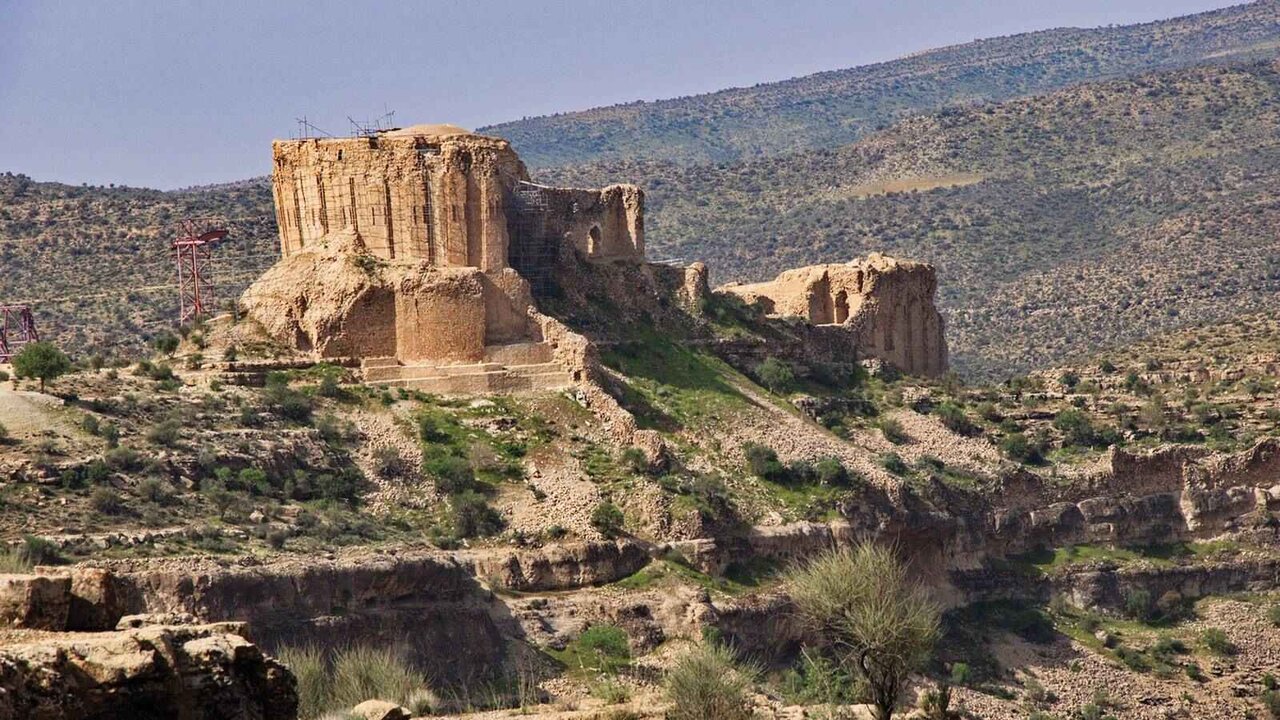Qa’leh Dokhtar, a reminiscent of Sassanid architecture, to undergo restoration

TEHRAN – Qa’leh Dokhtar, a ruined monument dating back to the Sassanid era, will undergo fresh restoration work, CHTN reported on Saturday.
The project is aimed at safeguarding the monument and its rooftop and renewing its surface using a traditional cob material.
Situated on a mountain slope neighboring the Firuzabad-Kavar road in southeastern Kerman province, Qal’eh Dokhtar (literally meaning the Maiden Castle) was made by Ardashir I, the founder of the Sasanian Empire (224–651) in 209 CE.
Based on narratives, the monument is named after the ancient Iranian goddess Anahita, to whom the term “Maiden” refers.
The entrance to the castle is through a tall gateway within a large, rectangular tower. Inside, a broad stairway leads up to a rectangular hall, with blind niches on either side of two large buttresses at the east end.
The fortified palace contains many of the recurring features of Sasanian architecture, such as long halls, arches, domes, recessed windows, and stairways.
The historical monument, along with several ruined royal palaces, strongholds, and fire temples in Bishapur, Firuzabad, and Sarvestan, has been registered on the UNESCO World Heritage List as Sasanian-era Archaeological Landscape of Fars Region. It was also added to the national heritage list in 1936.
Under the Sassanians, Iranian art experienced a general renaissance. Architecture often took grandiose proportions, such as the palaces at Ctesiphon, Firuzabad, and Sarvestan. According to Encyclopedia Britannica, one of the most characteristic and striking relics of Sassanian art are rock sculptures carved on abrupt limestone cliffs, for example at the historical sites Bishapur, Naqsh-e Rostam and Naqsh-e Rajab.
Metalwork and gem engraving became highly sophisticated. The scholarship was encouraged by the state, and works from both the East and West were translated into Pahlavi, the language of the Sassanians.
AFM
Leave a Comment